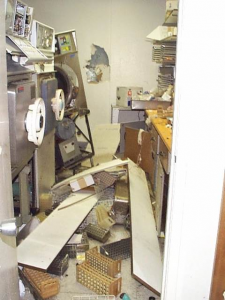
Autoclave FAQ
What plastics are autoclavable?
Only polypropylene and polycarbonates.
Polyethylene and high-density polyethylene are not autoclavable.
Polyethylene and high-density polyethylene are not autoclavable.
How long should I autoclave my liquids?
- Generally, the liquid volume determines the length of sterilization needed.
| LIQUIDS (bottles with vented caps, ½ full) | |
|---|---|
| 75mL | 25 MINUTES |
| 250mL | 30 MINUTES |
| 500 mL | 40 MINUTES |
| 1000mL | 45 MINUTES |
| 1500mL | 50 MINUTES |
| 2000mL | 55 MINUTES |
- Other factors to consider are the viscosity of your solution, the material of your container [glass, plastic, or metal], the packing density [separate bottles to allow steam to surround each bottle], and the location in the autoclave [close to the wall vs center of unit, over the drain].
- Never autoclave a sealed container of liquids as this may result in an explosion of superheated liquid during the cycle or when the container is opened.
Why is my Liquid cycle taking so long? It is only set for 30 minutes.
Depending on the unit, liquid cycles can take up to 30 minutes longer to run than the set sterilization time due to slow charge and slow exhaust steps.
Which autoclave program should I use?
| Program | Description | Suitable For |
| Pre-Vac | Air is actively removed from chamber by a series of vacuum and pressure pulses using a vacuum pump. | Biohazardous waste, items wrapped in porous material (surgical trays wrapped in muslin or towels; surgical instruments in sterilization pouches), pipette tip boxes, soils, etc. |
| Gravity | Because steam is lighter than air, as it enters at the top rear of the chamber, it passively “pushes” the air out of the chamber down the drain port in the front of the unit. | Non-porous items such as glassware (for example, media bottles, beakers, and flasks), spatulas, magnetic stirrers, etc., and biohazardous waste (if Pre-Vac cycle is unavailable). |
| Liquid | Gravity cycle with slower charge and exhaust steps, designed to prevent boil-over of liquids. | Media, buffers, water, contaminated agar plates, etc. |
Why does EH&S have the autoclave reserved for testing?
Various colleges have contracted with EH&S to monitor the autoclaves for proper function. To minimize disruption to researchers, all units in a building are tested at a preset day/time. Per contract agreement, EH&S will test the units weekly using a biological indicator vial. The vial contains a thermophilic organism (Bacillus stearothermophilus; ATCC® 7953) on paper strip and growth media.
Why does EH&S test the autoclaves if we use autoclave tape on all items?
Indicator tape does not measure/guarantee effectiveness of sterilization; only spore testing does. Use indicator tape with each load to verify it has been autoclaved.
Why is steam pouring out the door gasket?
Some units have an interior hinge on the door. Make certain this hinge is flat as you close the door. If this hinge is askew, though the door will feel locked, it will leak steam when the unit is started.
Some autoclaves are ‘passively’ sealed units, where the door is manually closed by the user. The door handle must be turned to the right until it will no longer rotate. Failure to tighten door completely will allow steam to leak during charge step.

